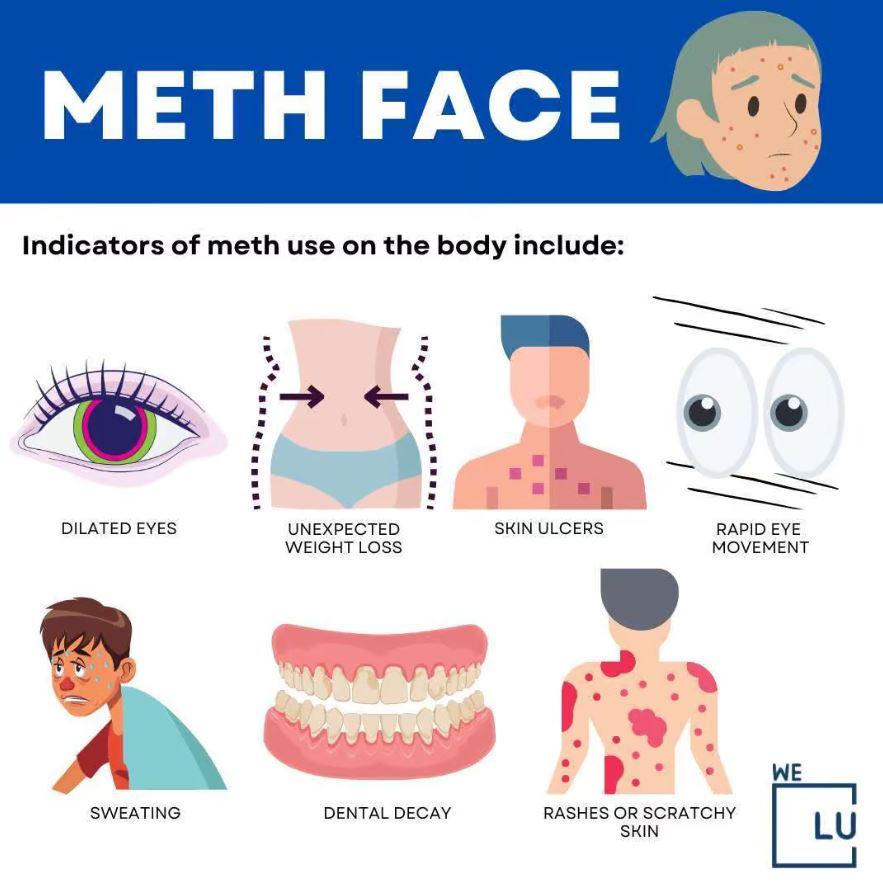Methamphetamine, also known by the name meth a highly powerful and addictive stimulant that wrecks havoc on both the body and mind of those who take it. Although the negative effects of methamphetamine on the brain and overall health are well documented, the effect upon the body is usually not considered. Meth sores, also referred to as methamphetamine-induced skin lesions, serve as a visible reminder of the destructive consequences of meth abuse. These painful and often infected sores predominantly emerge on body parts that are exposed, such as the arms, face and legs, serving as physical indicators of the ravages caused by methamphetamine, a devastating drug.
Understanding Methamphetamine-induced Skin Lesions:
Meth sores occur as a direct result of the changes in body chemistry brought on by methamphetamine. The drug triggers a cascade of harmful effects on your body, which include decreased blood flow, impaired wound healing and a greater risk of infection. These factors, in conjunction with the psychological effects of methamphetamine use, like obsessional scratching and picking can lead to the development of open and painful sores.
Appearance, Location and Location:
The skin lesions caused by meth vary in appearance and their severity. They often start as small, red, and itchy bumps that quickly grow into larger open sores. They are present throughout the body but are most frequently seen on the arms, face, and legs. This public exposure increases the social and psychological impact, as meth sores become difficult to hide and can be stigmatizing for individuals struggling with addiction.
Health Risks and Complications:
The open meth-sore structure exposes people to a greater risk of developing infections. Bacterial infections like cellulitis, may result from the introduction of pathogens in the wounds that are open. In addition, the habitual scrubbing and scratching associated with methamphetamine abuse can increase the danger of secondary infections, which can lead to further tissue destruction. In extreme cases, these infections may spread throughout the body, posing life-threatening consequences.
Psychosocial Impact:
Beyond the physical implications, the psychosocial impact of meth-related sores should not be overlooked. The visible and depressing character of these sores frequently causes profound social isolation, reduced self-esteem and reduced the quality of life for those affected. The presence of meth-related sores can trigger negative reactions from others, thereby perpetuating the societal stigma, and preventing reintegration to society.
Prevention and Treatment:
The treatment of meth sores requires an array of approaches that address both the addiction and the resultant skin lesions. Comprehensive addiction treatment programs, such as behavioral therapy, counseling and medical treatments, are crucial to combating methamphetamine addiction. Furthermore, treatments for the skin such as wound treatment as well as antibiotics to treat inflammation, and management of scars can aid in improving appearance of the skin and encourage healing.
Prevention is equally crucial. Awareness campaigns that focus on the physical consequences of methamphetamine use can discourage potential users and inspire addicts to seek assistance. Accessible addiction treatment and support networks are crucial in helping to prevent the development of meth-related sores by addressing the root cause of the problem.
Conclusion
Methamphetamine-induced skin lesions, commonly known as meth sores, serve as a stark reminder of the detrimental impact of methamphetamine abuse on the skin. These painful and visible lesions on the face, arms and legs are a stark reminder of the damage caused by this destructive drug. Beyond physical injury, the psychosocial repercussions of meth sores add to the challenges that sufferers. By fostering awareness, promoting prevention, and providing comprehensive treatments, society can move towards reducing the prevalence of meth sores, and assisting individuals on the path towards recovery.
Also check: Pass a methamphetamine drug test

